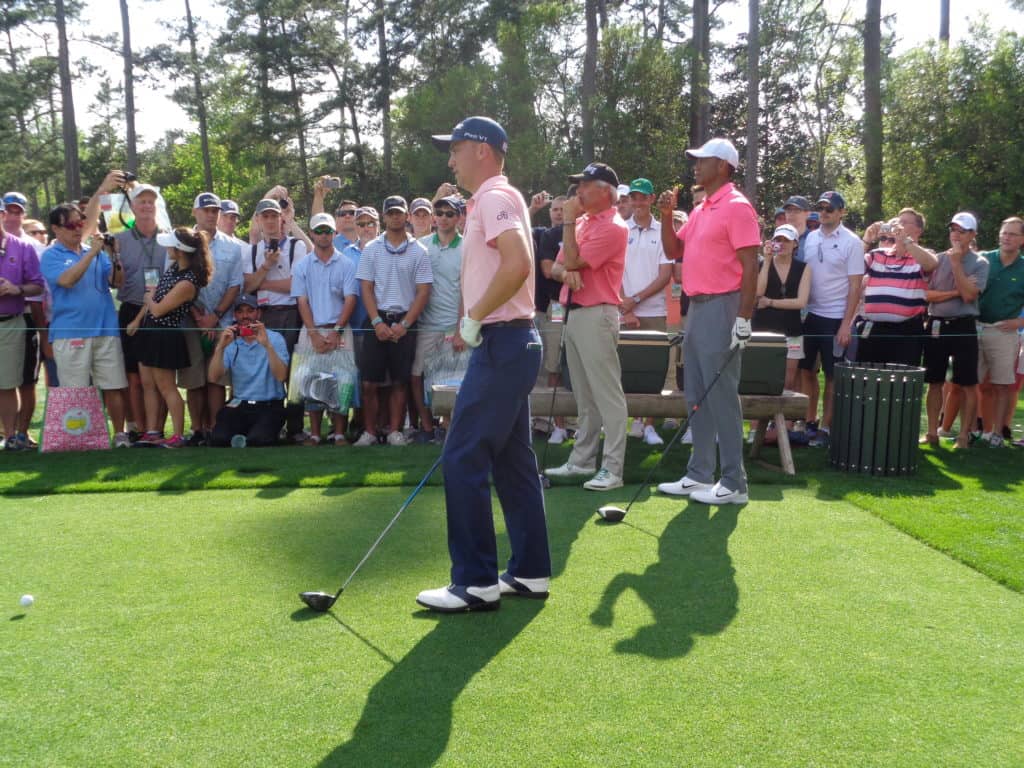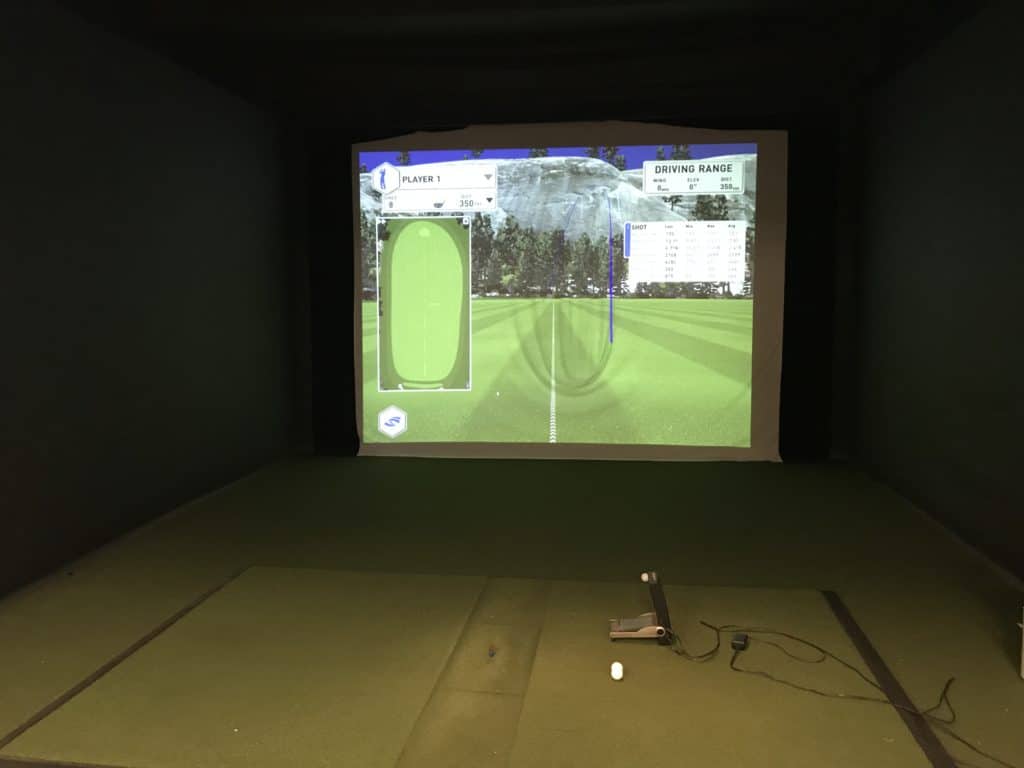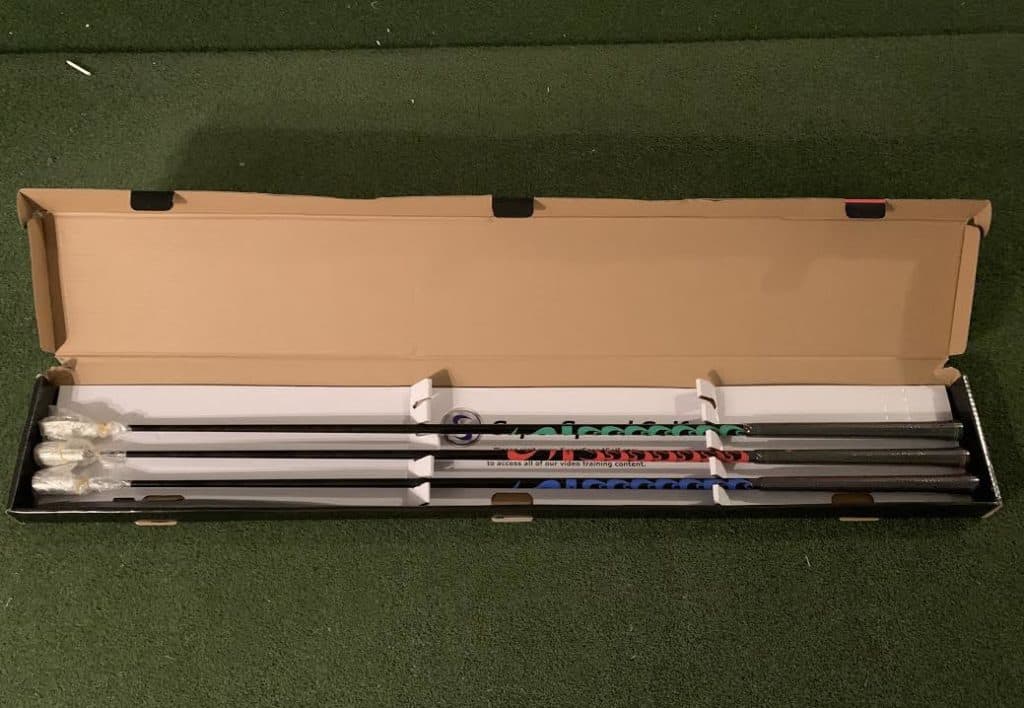A simple rule of thumb is that if your clubhead speed is above 100, you should fall in the 7 to 10.5 degree loft range, if you swing between 90 and 99 the recommendation is between 9 and 12 degrees range, and if you are below 90 the recommendation is between 10 and 15 degree range.
The driver is arguably the most important club in the bag. Every golfer needs to maximize their carry distance and the total distance.
While many might still believe the old saying, “drive for show, put for dough,” the reality is that the further you can hit your driver, the shorter your approach shot into the green will be, which on average results in a shorter putt length.
The shorter the putt length, the much higher chance of making the putt on average. For example, the make percentage on the PGA Tour from 8 feet is right around 50%. As soon as your get out to 30 feet, the make percentage is sigfinacntly lower.
The key takeaway is that the golfer must maximize distance off the tee.
This is where the loft of the driver comes into play. A combination of club head speed, ball speed, angle of attack, launch angle, and spin rate determine the total carry distance and the overall distance.
So where does loft fall into this equation? The loft will impact the launch angle and the overall flight of the ball.
Which leads us to our main question for this post!
Update: While I think the loft of a driver can be important, the kind of shaft you have in your driver is the most important part of the driver. Make sure you have the right weight and the right flex for your swing!

What Loft Should My Driver Be?
Here is a quick reference chart for you use:
| Swing Speed | Recommended Loft |
| 100+ | 7-10.5 degrees |
| 90-99 | 9-12 degrees |
| 89 and below | 10-15 degrees |
The two greatest factors on what loft you should use are the following:
- Swing Speed
- Angle of Attack
Factor #1: Swing Speed
For years the common advice is that the slower swing speed you have with the driver, the more loft you will want to use. Why we still believe this to be the case for the majority of golfers, there are other items to consider.
On the LPGA Tour, you will find slower swing speeds and high angles of attack with the driver when compared to the PGA Tour. Recently, more and more LPGA golfers are going with less loft as their angle of attack continues to increase. For years, we heard about the importance of teeing it high and letting if fly. Golfers everywhere teed their ball really high and start swinging up on the ball.
This resulted in some high ball flights if the golfer was directly following a chart similar to above.
The bottom line is that if your angle of attack is pretty standard at 1-2 degree up, you will want to follow the chart. Next, let’s consider the angle of attack.
Factor #2: Angle of Attack
The angle of attack on the PGA Tour averages about a negative 1.5 degrees. On the LPGA Tour this average is closer to positive 3 degrees up. What this means is that the PGA Tour player is hitting slightly down with their driver, while the LPGA Tour is hitting more up at impact.
The average weekend golfer should more than likely pay attention to what is going on with the LPGA Tour with equipment and other factors as the average swing speed of an LPGA Tour player is closer to your typical weekend golfer.
What this means is that if we are swinging up on the ball with the driver, we might consider less loft than recommended in the cart above.
We are seeing a shift in less loft on the LPGA Tour as the angle of attack continues to increase.
One of the main reasons the PGA tour has a negative angle of attack is that golfers can better control their start line with a slightly downward angle of attack with the driver. However, if you check out some of the power movements in golf, such as Bryson DeChambeua, you will see that he has the ball teed up pretty high and is launching high and long. He has also decreased his loft down in the 7 degree range.
What this means for the amateur golfer is that he or she needs to experiment with what helps them reach their goals. Do you want pure distance and don’t care as much about direction, or do you want a combination of both.
- Pure Distance: Tee it high, let it fly using a lower lofted driver and a higher tee
- Combination: Tee is medium, swing slightly up with a standard loft.
- Accuracy: Tee is lower, swing slightly down with a bit more loft than standard

How To Measure Your Swing
The key here is to get some data on what is important to you and your game. If you can get the pure distance without losing much accuracy, this would be our recommendation. If you are struggling to keep the ball in play, then it might be time to seek the combination approach to your driver.
This might vary based on the golf course that you typically play and how many hazards or out of bounds areas you have to deal with over the 18 holes.
The best way to measure your swing is with a launch monitor. The golfer has several options:
- Find a local teacher or driving range where you can utilize a Trackman or similar launch monitor.
- Purchase your own affordable launch monitor to assess your swing
Several years go, I decided to take the 2nd option and purchased a SkyTrak, I now have the following information:
- Carry Distance and Total Distance
- Spin Rate
- Launch Angle
- Ball Speed
- Spin Axis
Resource: Are launch monitors worth it? (7 Reasons to own one!)
Through this data, I have been able to experiment to know that a 8 degree driver is right for me as my swing speed is around 106-109 miles per hour and the launch angle at this driver loft with my angle of attack helps me maximize my carry and total distance with keeping the ball in play.
I would highly recommend golfers consider their own portable launch monitor to use one of the following ways:
- Take with with you to the driving range or golf course practice area.
- Set up in your garage with a net and mat.
- Build your own golf simulator in a garage, basement or extra room
The overall versatility of these devices is incredible and much more affordable than you might think. Gone are the days of paying 30-40 thousand dollars and a golfer could get started with one of the three options for 500 to 2000 dollars.
Resource: SkyTrak Lauch Monitor: The ultimate game improvement tool!
Top 3 Recommended Affordable Launch Monitors:
Next Steps: What Loft Should My Driver Be?
Go ahead and try to find a place where you can get the key swing numbers. Even if you visit your local sporting goods store that might have a launch monitor. If you are more serious and want continuous feedback, check out the links above to price out.
Go ahead and look at the key data and experiment with different lofted clubs. Other things to consider is if you prefer a lower or higher ball flight. Those that play in a lot of wind might seek a more penetrating ball flight to keep the ball out of the wind. Others might want to launch the ball as high as possible without losing distance.
If you don’t have access to a launch monitor head to your driving range and use the eye test to see how far and the height with different lofted clubs or adjusting your own driver.
Adjustable Drivers and Loft
The great news for all golfers is that the majority of high quality drivers today have the ability to provide you a range of loft. This is great news for the person that wants to tinker and try out different lofts to maximize the potential of their driver and improve their game.
If you don’t have an adjustable driver, I would highly recommend checking them out and investing in one. The ability to change the loft depending on your swing, the course conditions or other factors will go a long way in your overall performance. The touring pros all make these adjustments from week to week with equipment. Now the amateur can have a similar experience and when paired with your own launch monitor, you can base it on the data to help you make decisions.
Resource: Are adjustable drivers worth it?
Spin Rate and Total Distance
The least talked about, but maybe the most important factor in total distance is the spin rate of your driver and other clubs. Have you ever hit the shot that feels like it flew forever and was your longest drive of the season or recent memory? Chances are you somehow didn’t find an extra 10 miles per hour with your swing, but more likely that you found a quality spin rate.
Most golfers should live in in the range of a spin rate between 1800 and 2800 RPMs. Once again, depending on launch angle and swing speed is why there is a range. The lower the spin rate, on average the further the ball will fly. Once you get below 1800 you might lose distance and when you get above 2800 you will for sure lose distance.
On the opposite end is the ball that you hit and it seems to balloon and not go very far. Chances are your spin rate was in the 3000-5000 RPM range and you overspun the ball, resulting in a loss of distance.
With my SkyTrak I have found this feedback to be highly important to my overall improvement and total distance improvement. Start paying attention to some of these numbers and make the improvements that you seek!
Resource: Why is spin rate important in golf?
How To Gain Swing Speed
If you are someone looking to maximize your driver distance, I would highly recommend SuperSpeed Golf!
For years many golfers might have believed, well this is just how fast I can swing. Recent training tools have started to change many minds. We have seen many of the professional golfers get longer and longer with their tee shots as a result of additional swing speed. You will find many touring pros using the SuperSpeed System, which I highly recommend.
SuperSpeed Golf is one option to increase your swing speed through a science based overspeed training approach. In simple terms, you train by swinging a lighter club (20%) faster than you swing your driver. Over time, by training at a higher speed, your mind and body feel safe to swing that fast with your normal driver, resulting in an increase in driver swing speed.
The SuperSpeed System provides 3 different weighted sticks and takes the golfer through a training protocol every other day for about 15 minutes. The golfer can expect to see a 5-8% increase in swing speed, resulting in 20-30 yards for most golfers. The great news is that the 5-8% can be expected as early as the first training session. The additional speed will become more permanent after about 30-60 days of training.
My own experience has been an increase of 7-10 miles per hour on average from between 98-101 all the way up to 106-109. My goal is to hit the PGA Tour average of 113 mph in the coming months. I will continue to train every other day and watch in amazement as I am hitting drivers longer now than ever before!
Phil Mickelson has been known to increase his swing speed in the past year or so and is close to 120 miles per hour in his swing speed. There are potential results for golfers of all ability levels and age!
Resource: How to increase driver swing speed (3 options)
Check current price on SuperSpeed Golf System, here!
| Original Swing Speed | After 4-6 Weeks | New Carry Distance | Total Distance |
| 95 | 102 | 245 | 265 |
| 100 | 108 | 259 | 279 |
| 105 | 113 | 271 | 291 |
| 110 | 118 | 283 | 303 |

Final Thoughts: What Loft Should My Driver Be?
The bottom line is to go out and experiment and we would recommend getting real time feedback through a portable launch monitor or at a minimum finding a place where your swing can be measured to ensure you are hitting the right loft.
We prefer to experiment regularly and make the adjustments as needed as different factors change. Owning your launch monitor will be a game changer and can help take your game to the next level. Not only can you ensure you have the right equipment setup, but you can increase your golf and practice seasons. Stop taking 3-5 months of each golf year and instead train throughout the winter and find a way to get better.
The combination of SuperSpeed Golf and a SkyTrak is an impressive combination that brings results!
Take Action – What You Can Do Today to Get Better
What does this mean for you? I believe in the following recipe to get better:
1 – Improve your motion in the golf swing by identifying a golf instructor. Here are some options:
Here is a list of golf instructors that we have reviewed:
2 – Train to swing faster and improve your swing speed. Here are some options:
Looking to gain more Speed and Distance in your swing. Two Options:
3 – Understand course strategy and work to break through your next barrier. Here is a series on breaking through:
We have provided guides on how to break 100, 90, 80 and 70. Check out more below, if interested.
4 – Practice Frequently
Did you know that I build a golf simulator in my garage and have played over 500 rounds of golf on my SkyTrak system? It has been a game changer and one worth checking out. Here are some of my other posts on golf simulators frequently asked questions:
- Is a Golf Simulator Worth It?
- How to Build a Golf Simulator?
- What is the Best Golf Simulator?
- Golf Simulator Accessories?
- How to Build a Golf Simulator for under $7000
- Top 11 Reasons to Buy a SkyTrak
- How to Build a Golf Simulator for Under $1000
- Why Build A Golf Simulator?
- What Space is Needed?
- Can A Golf Simulator Improve My Game?
- How Much Does A Golf Simulator Cost?
- Don’t Forget to Check out our 15 best golf swings of all time.
I am an amateur golfer on a journey to get better, enjoy the game as often as possible and share my passion and knowledge with others. I have coached high school golfers at a high level and have a great passion for the game and want to give back. I enjoy learning about the golf swing and am currently studying to be a certified professional golf instructor. Join me in our journey to get better everyday.

